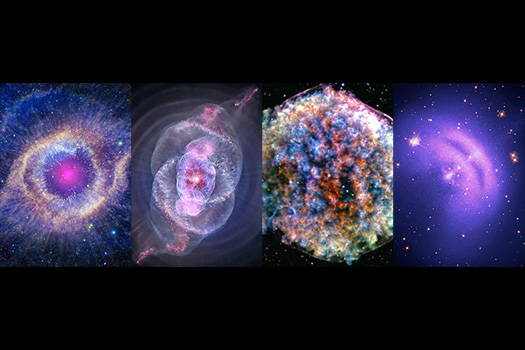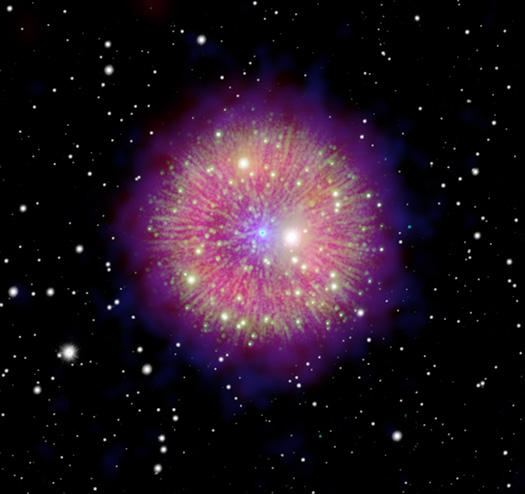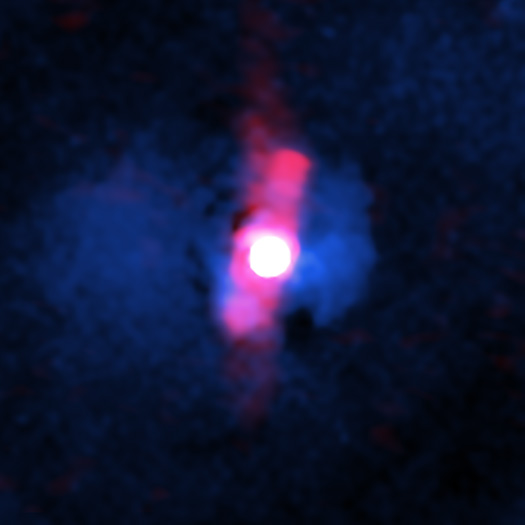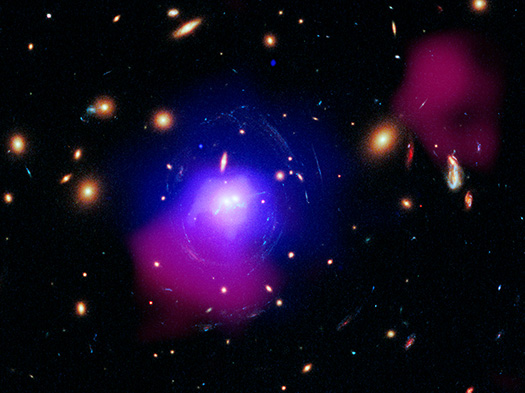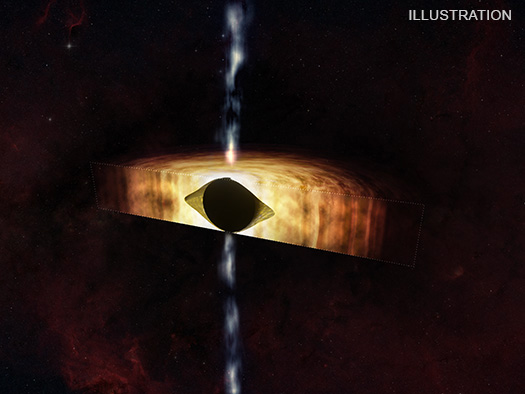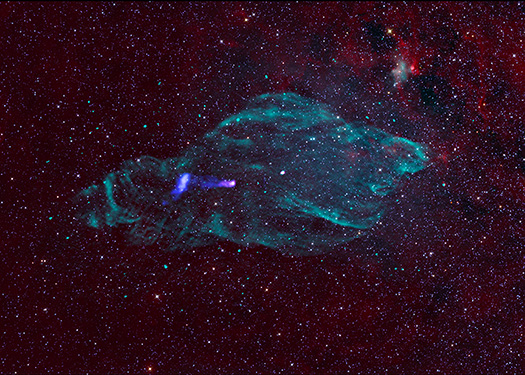Chandra and Voyager: A Robust 3D Experience
Submitted by chandra on Wed, 2024-04-17 17:18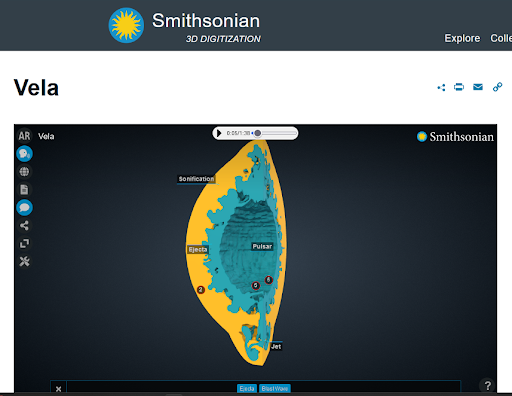
A screenshot from the Smithsonian Voyager 3D platform: Vela Pulsar is shown here with its ejecta and blast wave turned on. Explore the Vela sonification and visual description tour while tumbling around the 3D model and turning the ejecta and blast wave on and off. Download an stl model for 3D printing to hold the Vela Pulsar in your hand.
Credit: INAF-Observatorio Astronomico di Palermo/S.Orlando & NASA/CXC/SAO/A. Jubett et al; Smithsonian Institution/J. Cope, M. Dattoria et al;
The creative team at Chandra X-ray Center has been hard at work on a collaboration with the Smithsonian Institution’s Digitization Program Office (3D SI). Together, our teams have been bringing three-dimensional X-ray datasets to the Voyager platform to offer inclusive, multi-sensory learning experiences.
The Chandra X-ray Observatory is one of NASA's “Great Observatories” (along with the Hubble Space Telescope and the James Webb Telescope). Chandra, the world's most powerful X-ray telescope, is still going strong after 25 years in orbit. The Smithsonian Astrophysical Observatory (SAO) in Massachusetts operates the telescope and runs the science center on behalf of NASA.
In 2021, Chandra and 3D SI released a collection of cosmic models showing various high-energy phenomena in three dimensions including novas, supernovas, pulsars, and the Chandra telescope itself. These 3D representations provided the opportunity for users to tumble around each object and learn about its features and the science behind the model. This has been a huge step in granting greater access to these incredible 3D models and prints for institutions like libraries and museums, as well as the scientific community and individuals in the greater public.




